
Podcast Advertising: Impact of Ad Types, Messages and Media Context on Consumer Responses
Dr. Ashok Kumar Meena[1]
Ms. Ayushi Jain[2]
Abstract:
This study uses a mixed-methods approach, combining qualitative and quantitative research techniques, to investigate the efficacy and impact of podcast advertisements. Comparing host-read and pre-recorded advertisements, the surveys in the quantitative component gauge listeners’ recall, relevance, and trust in podcast advertisements. To acquire more in-depth understanding of the attitudes, feelings, and behavioral effects of these advertisements, the qualitative component entails conducting focus groups and interviews with podcast hosts and listeners. The results show that people view host-read commercials as more interesting and successful than pre-recorded ones. Because of the host’s genuineness and personal connection, listeners attribute higher recall rates and more relevance to the advertisements they hear. Different media contexts elicit different emotional reactions; well-aligned advertisements elicit positive emotions, while less relevant ones elicit negative ones. Engagement and recall are strongly influenced by the tone and style of advertisements, with conversational and upbeat tones being more memorable. Even though podcast advertisements are generally well received, listeners frequently skip them because they are too long, don’t interest them, or prefer uninterrupted content. Ad effectiveness is greatly influenced by the podcast’s context, and host-endorsed advertisements are perceived as having greater credibility than non-endorsed ones. For advertisers looking to maximize their podcast advertising campaigns and raise listener engagement, these insights offer insightful advice.
Keywords:Consumer Responses, Podcast, Advertising Practice, Messages, Consumer Responses, Media, etc.
- Introduction
Podcast advertising is one of the most popular mediums through which brands reach very engaged and targeted audiences. As consumption of podcasts continues to grow, so does the search for effective ways of catching the ear of listeners and ensuring the impact stays with them over time, which can translate into increased brand recall and engagement. With such a medium, an advertisement becomes close to the relationship of being intimate with the listenership between podcast hosts and thus has a higher possibility to achieve more trust and reception on the message of advertising. Again, the effectiveness of podcast advertisements is also dependent upon whether it is in a given ad format, relevant to what listeners might be interested in or with respect to the placement.
The main benefit of podcasts is that they allow advertisements to be delivered without breaking the flow of content. Unlike traditional ads on television and radio, podcast ads become part of the ongoing content, thus making it much more personal and interesting. This integration allows for more brand recall and engagement when the listener is generally disposed to receive information as naturally affiliated with the podcast they tune in to. However, that doesn’t make it seamless enough, as listeners start developing fatigue and the tendency of not listening to ads – killing the messaging.
Brands interested in optimizing their marketing efforts through podcast advertising need to understand the dynamics of such commercials. The advertisers should understand how such factors as the credibility of the host endorsements, relevance of the content to the interests of the listeners, and the context of the podcast may or may not impact the response. By aligning the advertisements with the tone and content of the podcast, brands can increase ad effectiveness, enhance a good listening experience, and hence ensure better results. Moreover, the success of a podcast ad may depend on its format: host-read, pre-recorded, or an integrated segment, which may evoke a different level of listener engagement and trust.
This article discusses the above key factors of effectiveness in podcast advertising. It will be a good source in trying to understand listener recall likelihood, relevance, and skipping behavior, as well as trust in the podcast ads in general, through an analysis of listener data. By knowing how podcast context merges with ad content, as well as different levels of engagement that listeners display, this research offers marketers important information regarding the creation of a really appealing podcast ad working towards targeting a specific group. The results offer useful information about how to fine-tune podcast advertising strategies in order to improve brand visibility, recall, and engagement.
1.1 Significance of the Study
The research “Understanding Podcast Advertising Processing and Outcomes: An Analysis of Podcast Ad Types, Message Types, and Media Context on Consumer Responses” (Perks et al. (2020) has significant importance for the media and advertising sectors. It is crucial to comprehend the impact of different podcast ad formats and message styles on consumer reactions, as podcasting becomes more popular as a means of reaching audiences. This research aims to provide valuable insights into the comparative effectiveness of various advertising formats, such as host-read and pre-recorded ads, and their impact on listener memory and engagement.(Petty & Cacioppo, 1986) The examination of these characteristics in the research aims to assist marketers in enhancing the efficacy of their podcast advertising strategies. The research also examines the impact of media context on listeners’ perception and response to podcast commercials. (Baek & Morimoto, 2012)The study aims to aid marketers in tailoring their messages to different podcast settings and enhancing their resonance with listeners by examining how the presentation context of an advertising impacts its efficacy. To develop more influential and focused advertising strategies, one must possess a comprehension of context. (Katz, Blumler, &Gurevitch, 1974)
Moreover, by evaluating the impact of ad tone, style, and host endorsement on consumer responses, we may get a more comprehensive knowledge of how these factors affect the credibility and attractiveness of podcast commercials. (Smith, 2019)The study’s findings will assist marketers in creating more captivating and immersive advertising material, hence enhancing customer confidence and boosting response rates. The study’s results will enhance the creation of more effective podcast advertising strategies by strengthening audience relationships and improving advertising effectiveness. This will be advantageous for both podcast producers and advertisers.
1.2 Background of the Study
Podcasting has emerged as a prominent and rapidly growing media in the era of digital technology. It provides marketers with a unique opportunity to engage with targeted consumers in a highly personalised and captivating manner. As podcasts become more popular, it is essential to fully understand the intricacies of podcast advertising. Podcasts provide a variety of advertising forms and sorts, including pre-recorded advertisements and host-read ads, which have distinct impacts on listener behaviour and perception, unlike conventional media. (Perks, Turner, & Tollison, 2020)Variables such as the kind of commercial, the style and tone of the message, and the delivery location all influence the effectiveness of podcast advertising. presenter-read commercials, when the podcast presenter directly endorses a product or service, are often seen as more authentic and engaging compared to pre-recorded adverts. (Smith, 2019)Furthermore, the emotional responses that commercials elicit, together with the media environment of the podcast (including the audience, subject, and genre), have a significant impact on listener emotions and the efficacy of the ads.(Baek & Morimoto, 2012)
Despite the increasing interest in podcast advertising, there is a lack of comprehensive research that examines the interaction between these aspects and their impact on customer reactions. This research aims to fill the existing vacuum by analysing the impact of different podcast advertising kinds, message styles, and media settings on listener engagement, memory, and overall efficacy. (Petty & Cacioppo, 1986) By analysing these aspects, the study will provide valuable insights for sponsors seeking to improve their podcast advertising strategies and bolster their connection with listeners. Understanding these characteristics will also be advantageous for the media and advertising research industry as it will provide evidence-based recommendations for creating podcast advertisements that are more impactful and prosperous.
1.3Theoretical Framework
Although established theories on media consumption and advertising effectiveness are very well integrated, the specific scope lies in podcast advertising with UGT for audience engagement, as the theory is according to UGT; individuals use the media in a direct and active manner in pursuit of needs such as information or social interaction. (Katz, Blumler, &Gurevitch, 1974)This would illustrate to listeners making decisions on which to listen and consume adverts on the podcast based on its perceived relevance or a personal interest that then influences their engagement and memory recall. (Smith, 2019)This theory then means if the adverts align very well with what is going on in the podcast, they are going to capture a listener’s attention and provide reception to positive reception of adverts.
Another important theoretical model that applies here is the Elaboration Likelihood Model, which explains the perception and processing of persuasive messages like podcast ads in front of the audience. (Petty & Cacioppo, 1986)According to ELM, there are two routes to persuasion: central, which involves thoughtful processing of ad content; and peripheral, where the superficial cues, such as the host credibility or the amount of integration into the podcast, drive the process. Especially pod cast ads read by their hosts, are more probable through the central route, they also arouse the involvement of the message into their self, and the better memories. This model explains, why host-read ads may be more effective than other pre-recorded ones-people are perceived as more trustworthy and more integrated into podcast’s story, thus affecting its listener’s trust and further ad effectiveness.
1.4 Research Questions
The main research questions of the research study are stated as follows:
- What effects do various podcast ad formats (such as host-read versus pre-recorded) have on recall, perceived efficacy, and listener engagement?
- How do listeners’ views towards podcast advertisements and their subsequent behaviours become influenced by their emotional reactions and the surrounding media environment?
- What impact do podcast presenters’ endorsements, tone, and style have on the credibility, relevance, and overall perception that listeners have of podcast advertisements?
- How do different podcast ad formats (host-read vs. pre-recorded) and media contexts influence listeners’ engagement, recall, and actions following exposure to the advertisement?
1.5 Objectives of the Study
The main objectives of the research study are stated as follows:
- To evaluate the impact of different podcast advertising forms on listener retention and involvement.
- The objective is to analyse the impact of media environment and emotional responses on listeners’ reactions to podcast commercials.
- The objective is to examine the impact of the tone, style, and host endorsement of an advertisement on the efficacy and believability of podcast advertising.
- To evaluate the impact of podcast advertisement types, message tone, and media context on consumer responses, including engagement, recall, and purchase intent.
- Literature Review
Ritter et al 2009:
Theory: The objective of this study is to examine how the location and kind of advertisements in podcasts affect customer perceptions of intrusiveness, aggravation, attitude towards the ad, and ad avoidance. The study will specifically concentrate on understanding how various placements and types of ads effect consumer reactions. Subject: Study. Examines the advertising strategies used in podcasts, specifically comparing standard advertisements with sponsorships and ad placements at the beginning and middle of episodes. This research used a 2 x 2 experimental design to assess consumer responses to different kinds of advertisements (conventional vs. sponsored) and their positions (beginning vs. middle). The methodology included conducting experimental research to examine customer responses to various podcast ad locations and kinds. This included assessing factors such as perceived intrusiveness, aggravation, attitude towards the ad, and avoidance.
Piacentine, C. (2023):
Theory: The study examines how ad type, message type, and genre affect consumer responses in podcast advertising, focusing on native advertising, persuasion knowledge, narrative transportation, and media context congruity. Context: The study examines how host-read vs. announcer-read ads and podcast genres (news vs. true crime) affect audience engagement and advertising outcomes. Characteristics: A 2 x 2 x 2 factorial experiment comparing eight podcast advertising conditions and consumer responses to different ads and messages. Methodology: A full factorial between-subjects online experiment by Piacentine (2023) examines how ad type, message type, and genre affect consumer responses, including narrative transportation and ad evaluation.
Moe, M. (2023):
Theory: This study aims to create a theoretical framework for understanding how podcast listeners interact with and process advertising, building on previous research on attitudes towards advertising, consumer action, and listener preferences for host-read ads. Context: The study focusses on podcast advertising and uses survey research to examine attitudes and motivations among 1714 podcast listeners. Characteristics: Conducts survey research and develops scales, modifying and creating new ones. The study examines listeners’ attitudes, motivations, and predictors of consumer behavior. Methodology: Survey results show positive attitudes towards podcast advertising, particularly host-read ads. Consumer actions are motivated by positive attitudes, with podcast consumption levels serving as moderate predictors of attitudes and actions, while gender and age are weaker predictors. The scales were evaluated for validity and internal consistency.
Brinson et al (2023):
Theory: The study focusses on how consumers evaluate promotional content from podcast hosts with whom they have a parasocial relationship, and how this affects their behavior towards the advertised brand. It combines the Persuasion Knowledge Model and the Parasocial Interaction Theory. Context: Investigates promotional messaging in highly rated podcasts, contrasting traditional advertisements with host-read messages among listeners who have varying degrees of parasocial relationships with the host. Characteristics: This study employs a between-subjects experimental design to examine how a parasocial relationship affects the evaluation of promotional content and subsequent behavioral intentions. Methodology: Moderated mediation analysis shows that a parasocial relationship decreases evaluative persuasion knowledge about the message, but indirectly increases the intention to learn more about the brand. The study provides new insights and practical recommendations for podcast marketers.
Research gap:
The present research addresses this gap by focusing on exploring the extent to which the podcasting context influences the effectiveness of advertising in comparison to the conventional media. Even though many studies have looked into engagement and advertising recall across a variety of media, relatively little research has focused solely on the distinct characteristics of podcast environments and their role in influencing ad response. Specifically, there is an emerging need to understand which elements of podcast ads most impact listener engagement and levels of trust compared to listening to other media. A gap in the literature about the role of podcasting context in shaping advertising effectiveness is addressed within this study, providing valuable insights into marketers’ ability to leverage the current and growing popularity of podcasting as an advertising medium.
III. Methods
3.1 Research Design
Mixed-Methods Approach: In order to fully comprehend podcast advertising, this study will combine qualitative and quantitative methods. While the quantitative component measures and examines particular variables and their relationships, the qualitative component will delve deeply into perceptions and experiences.
3.2 Data Collection
Qualitative Data:
Interviews: Have semi-structured conversations with podcast hosts and listeners. Interview questions will focus on the impact of ad tone and host endorsement, as well as impressions of ad effectiveness and emotional reactions.
Focus Groups: Set up focus groups with podcast listeners to hear about their opinions and experiences with various podcast advertisements and media environments.
Quantitative Data:
Surveys: Give podcast listeners structured questionnaires. Along with other quantitative measures, the survey will ask questions on a Likert scale in order to evaluate the effectiveness, relevance, recall, skipping behavior, and trustworthiness of advertisements that podcast hosts endorse.
3.3 Sampling
Sampling Qualitatively:
Listeners of podcasts: Choose ten to fifteen people who represent different podcast genres and listening preferences using purposive sampling.
Podcast Hosts: Choose five to ten hosts from various genres to provide a variety of viewpoints.
Qualitative-Based Sampling:
Podcast Listeners: To choose a representative sample of 200 podcast listeners, use random sampling. Make sure the podcast genres and demographics are diverse.
3.4 Data Analysis
Thematic Analysis: Examine transcripts from focus groups and interviews to find recurring themes and trends in the answers from the hosts and listeners. To classify and analyze qualitative information about the impact of ads, viewers’ emotions, and hosts’ influence, use coding.
Quantitative analysis method: To analyze the relationships between variables like ad type, recall, relevance, and trust, use inferential statistics and descriptive statistics to summarize survey responses.
3.5 Ethical Considerations
- Obtain informed consent from each participant, making sure they are aware of the study’s objectives and their freedom to discontinue participation at any time.
- Maintaining participant confidentiality can be achieved by securely storing information and anonymizing data.
- Results
4.1 Qualitative Analysis
The responses of the qualitative questions are given below in consolidated form:
- How do listeners describe their perception of the effectiveness of different types of podcast ads?
Listeners usually perceive host-read commercials to be more efficacious compared to pre-recorded advertisements. The belief is that the personal touch and authenticity of host-read commercials contribute to the development of a deeper relationship and better levels of trust, which are attributes that are highly valued. Pre-recorded advertisements are highly regarded for their consistent and polished production, even if they may be seen as less captivating at times. Listeners perceive advertising read by the presenter as more relevant and relatable due to the host’s personal support. Consequently, these advertising have a tendency to generate greater levels of memory and involvement.
- What emotional responses do listeners report when encountering podcast ads in various media contexts?
Listeners describe varying emotional reactions based on the specific media environment in which they listen to the podcast. Advertisements put in a popular and beloved podcast are likely to evoke positive emotions, such as enthusiasm and intrigue, since they correspond well with the listener’s tastes and disposition. Conversely, adverts that are put in podcast situations that are not as relevant or interesting might lead to indifference or irritation. The emotional effect is heightened when the commercial aligns with the content and tone of the podcast, so enhancing the listener’s entire experience.
- In what ways does the tone or style of a podcast ad message impact listener engagement and recall?
The tone and style of a podcast commercial message have a substantial impact on the level of listener engagement and memory. Advertisements given in a conversational and engaging tone are more likely to attract the attention of listeners compared to those that are repetitive or formal. A warm, passionate, or amusing way is often more remembered than other styles, leading to greater recall rates. Conversely, advertising that are too assertive or do not align with the podcast’s style might diminish memory and lead to a decline in interest.
- How do listeners compare their experience with podcast ads to ads in other media formats?
Listeners have a positive perception of commercials in podcasts, especially due to the personal connection and relevancy that podcasts provide, as opposed to advertisements in other types of media. In comparison to traditional advertisements on television or radio, which they frequently consider to be disruptive, they find that podcast advertisements are less intrusive and more integrated into the content. Their overall satisfaction with podcast advertising is increased by the fact that they are able to listen at their own pace and that advertisements that are based on the content of the podcast are relevant to them.
- What factors influence listeners’ decisions to take action after hearing a podcast ad?
When deciding whether or not to take action after hearing an advertisement on a podcast, listeners are influenced by a number of important factors. Along with a call-to-action that is both clear and compelling, it is of the utmost importance that the advertisement be relevant to the individual’s personal interests or needs. Another important aspect is the host’s trustworthiness and excitement, together with the perceived value of the product or service being presented. Advertisements that evoke an emotional reaction from the viewer and provide a clear and direct call to action are more likely to generate a response from the audience.
- How do listeners’ perceptions of the podcast host affect their response to the advertised content?
The perception of the podcast presenter by listeners greatly influences their response to the promoted information. The efficacy of the commercial is enhanced when the presenter is seen to possess credibility, trustworthiness, and relatability. This enhances the probability that listeners will actively interact with the product or service being advertised. As a result of the fact that listeners are more likely to trust and act on recommendations from someone they admire or relate to, the impact of the advertisement can be increased by personal connections and positive feelings towards the host.
4.2 Quantitative Analysis
Table 1: Effectiveness of Host-Read vs. Pre-Recorded Ads
| Scale of Rating | Frequency |
| Slightly effective | 37 |
| Moderately effective | 62 |
| Very effective | 51 |
| Extremely effective | 28 |
| Not at all effective | 22 |
| Total | 200 |
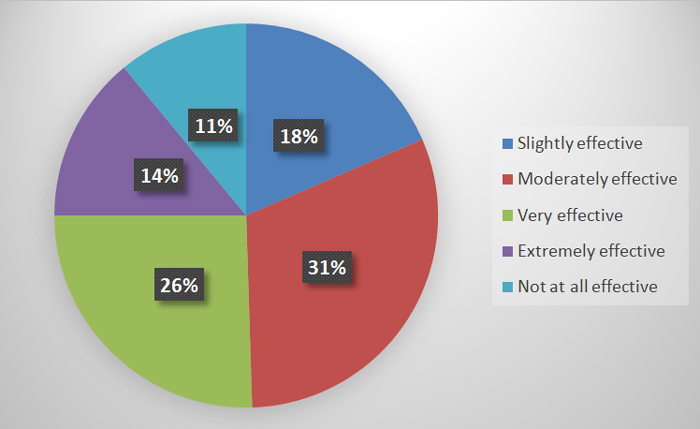
Figure 1: Effectiveness of Host-Read vs. Pre-Recorded Ads
Table 2:Ad Types details
| Ad Type | Frequency |
| Pre-recorded ads | 73 |
| Host-read ads | 85 |
| Both equally | 25 |
| Neither | 17 |
| Total | 200 |
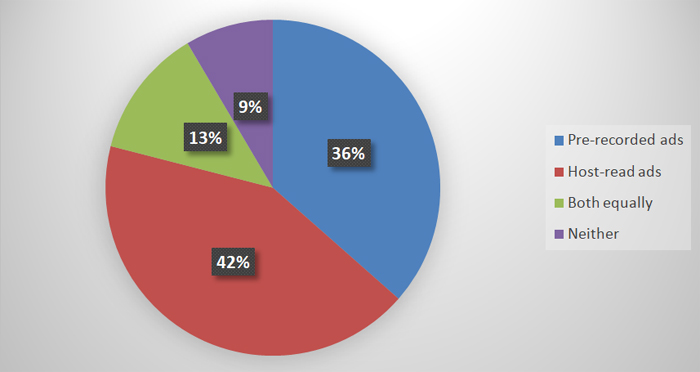
Figure2:Ad Types details
The information shows that most listeners believe host-read advertisements to be more successful than pre-recorded ones. In particular, 73 respondents preferred pre-recorded advertisements, while 85 preferred host-read ads. This preference is evident in the effectiveness ratings, where host-read advertisements received a 51% rating of “Very effective” or “Extremely effective,” while pre-recorded advertisements received a 37% rating. On the other hand, slightly more listeners than pre-recorded ads (17%), finding host-read advertisements “Not at all effective,” (22%). Although host-read advertisements seem to interact with listeners more successfully overall, a sizeable section of the audience still does not think they have much of an impact.
Table 3:Likelihood of Remembering a Product from a Podcast Ad
| Recall Likelihood | Frequency |
| Somewhat likely | 52 |
| Very likely | 72 |
| Unlikely | 34 |
| Somewhat unlikely | 22 |
| Very unlikely | 20 |
| Total | 200 |
| Recall Frequency | Frequency |
| Rarely | 30 |
| Always | 40 |
| Occasionally | 70 |
| Frequently | 45 |
| Never | 15 |
| Total | 200 |

Figure3:Recall Likelihood ofProduct from a Podcast Ad
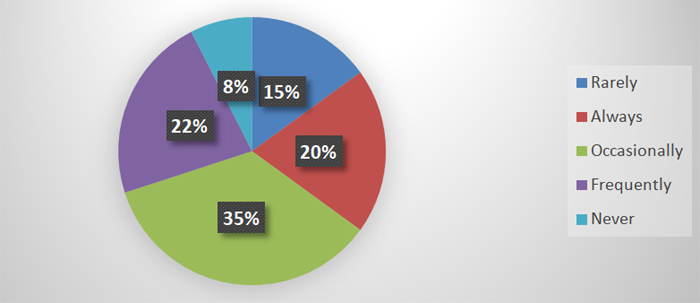
Figure4:Recall Frequencyof Product from a Podcast Ad
According to the data, most listeners are likely to remember a product from a podcast advertisement; 72 respondents thought it was “very likely” and 52 thought it was “somewhat likely” that they would remember the product. This implies that listeners recall podcast advertisements rather well. Many listeners have a moderate to high recall of podcast advertisements, as evidenced by the fact that 70 respondents reported remembering ads “Occasionally” and 45 “Frequently” in terms of actual recall frequency. But only 30 listeners remember the ads “Rarely” and 15 “Never,” indicating that a small portion of the audience has trouble remembering the advertisements. Overall, recall frequency varies among listeners even though many of them remember the information from podcast advertisements.
Table 4: Relevance of Podcast Ads to Interests
| Relevance | Frequency |
| Slightly relevant | 43 |
| Moderately relevant | 62 |
| Very relevant | 57 |
| Extremely relevant | 28 |
| Not relevant at all | 10 |
| Total | 200 |
| % of Relevant Ads | Frequency |
| 81-100% | 32 |
| 61-80% | 49 |
| 41-60% | 62 |
| 21-40% | 37 |
| 0-20% | 20 |
| Total | 200 |

Figure5:Relevance of Podcast Ads to Interests
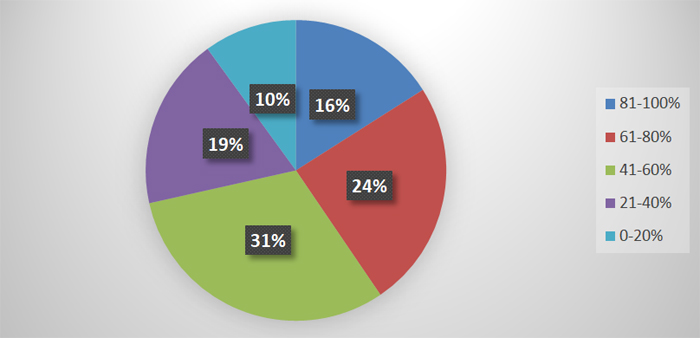
Figure6:Relevance % of Podcast Ads to Interests
According to the data, most listeners believe that podcast advertisements are pertinent to their interests. Particularly, 57 respondents rated the advertisements as “Very relevant,” and 28 rated them as “Extremely relevant,” suggesting that they strongly correspond with the interests of the listeners. Of the listeners, 62 consider the advertisements to be “Moderately relevant,” and 43 consider them to be “Slightly relevant.” Just 10% of respondents said the advertisements were “Not relevant at all,” indicating a low level of discontent with relevance. When it comes to the proportion of relevant advertisements, 62 respondents say that 41–60% of them correspond with their interests, 49 say that 41–80% of them do, and 32 say that 81–100% of them do. This shows that while a large number of advertisements are deemed relevant, there is still opportunity for improvement in terms of more consistently matching the interests of the listener.
Table 5: Frequency of Skipping Podcast Ads
| Skipping AdsFrequency | Frequency |
| Sometimes | 62 |
| Often | 45 |
| Always | 30 |
| Rarely | 38 |
| Never | 25 |
| Total | 200 |
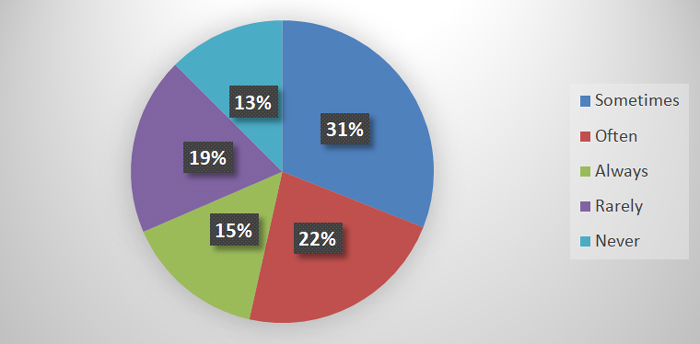
Figure7:Frequency of Skipping Podcast Ads
According to the data, a considerable proportion of listeners spoof podcast advertisements on a regular basis. Of the respondents, 62 said they “Sometimes,” 45 said they “Often,” and 30 said they “Always” skipped ads. On the other hand, 25 listeners say they never skip advertisements, while 38 say they do so seldom. Sixty respondents gave the preference for uninterrupted content as the most frequent justification for ignoring advertisements, demonstrating a strong desire for a seamless listening experience. Another noteworthy reason is that 53 listeners feel that ads are too long, 41 think they are boring, and 29 think they are irrelevant. Merely 17 participants mention additional motives. Though there is some variation in the reasons for skipping, the inclination to skip advertisements is generally influenced by the desire for uninterrupted content and perceived ad length.
Table 6: Influence of Podcast Context on Ad Response
| Main Reason | Frequency |
| Ads are too long | 53 |
| Ads are not interesting | 41 |
| Prefer uninterrupted content | 60 |
| Ads are irrelevant | 29 |
| Others | 17 |
| Total | 200 |
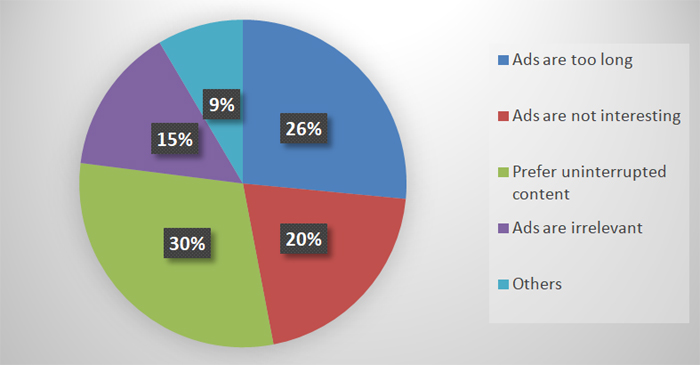
Figure6: Influence of Podcast Context on Ad Response
Table 7:Podcast ContextInfluence and Importance
| Podcast ContextInfluence | Frequency |
| Slightly | 55 |
| Significantly | 62 |
| Moderately | 40 |
| Extremely | 25 |
| Not at all | 18 |
| Total | 200 |
| Podcast ContextImportance | Frequency |
| Very important | 70 |
| Slightly important | 34 |
| Moderately important | 50 |
| Extremely important | 29 |
| Not important | 17 |
| Total | 200 |
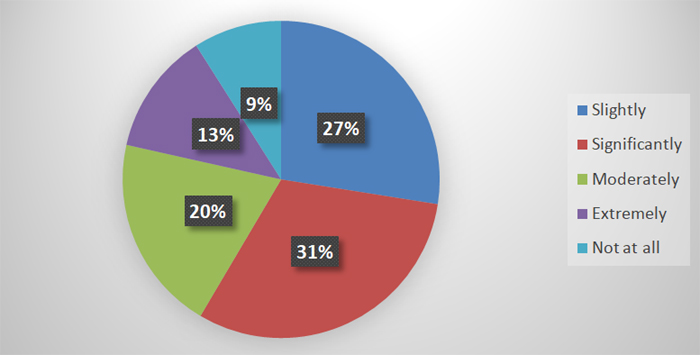
Figure7: Podcast ContextInfluence
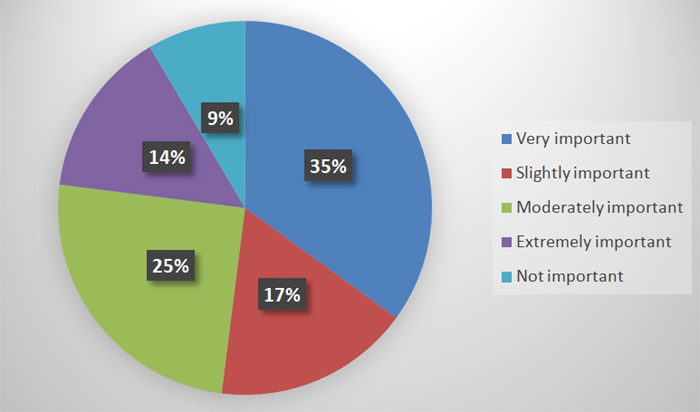
Figure8:Podcast ContextImportance
The information shows that listener reactions to advertisements are strongly influenced by the podcast context. Forty of the sixty-two respondents say the podcast context has a “Moderate” effect on their ad response, while the majority—62—feel that it influences it “Significantly.” According to 25 people, it is “extremely” influential, while 18 people think it has “no impact at all.” Podcast context is important. Of the listeners, 70 think it’s “Very important,” 50 think it’s “Moderately important,” and 29 think it’s “Extremely important.” On the other hand, 17 people do not think it is important, and 34 think it is “Slightly important.” This implies that the majority of listeners give the context in which advertisements are presented a lot of weight, which influences their perceptions and level of engagement.
Table 8: Trust in Host-Endorsed Ads vs. Non-Endorsed Ads
| Trust Host-Endorsed AdsLikelihood | Frequency |
| Moderately more likely | 58 |
| Slightly more likely | 47 |
| Much more likely | 55 |
| Extremely more likely | 30 |
| Not at all more likely | 10 |
| Total | 200 |
| Trust in Host-Endorsed Ads | Frequency |
| A little | 22 |
| Moderately | 65 |
| Completely | 55 |
| A lot | 41 |
| Not at all | 17 |
| Total | 200 |
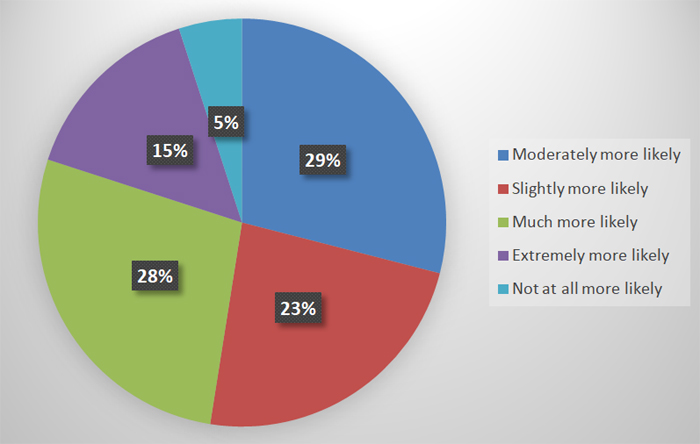
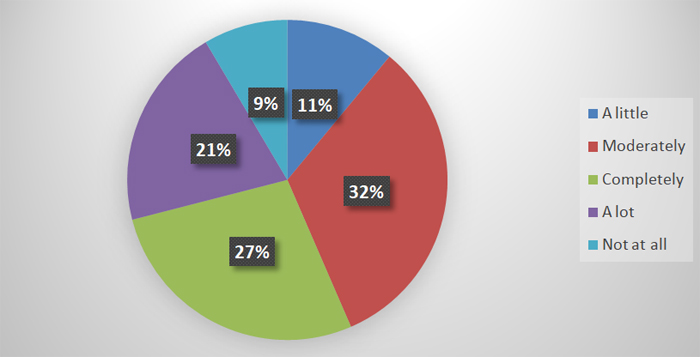
Figure9: Trust in Host-Endorsed Ads vs. Non-Endorsed Ads
According to the data, listeners are generally more trusting of host-endorsed advertisements than they are of non-endorsed ones. In particular, thirty respondents think host-endorsed advertisements are “Extremely more likely” to be trusted, while fifty-five respondents find them “Much more likely.” Furthermore, 47 respondents believe they are “Slightly more likely” to be trusted, while 58 respondents believe they are “Moderately more likely.” There is “No increase in likelihood” of trust for host-endorsed ads, according to only 10 people. Regarding the degree of actual trust that listeners have in host-endorsed advertisements, 65 rate it as “Moderately,” 55 as “Completely,” and 41 as “A lot.” But only twenty-two percent trust them “A little,” and seventeen percent have no faith at all. According to the data, advertisements that are endorsed by hosts are generally regarded as more reliable, as most listeners exhibit varying degrees of confidence in these ads.
- Discussions
5.1 Significance of the Findings
- Effectiveness of Host-Read vs. Pre-Recorded Ads: The discovery that host-read advertisements are typically regarded as having greater impact than pre-recorded advertisements highlight the significance of customization and genuineness in podcast marketing. Because of the host’s familiarity and credibility with the audience, host-read advertisements have greater effectiveness and audience engagement. This demonstrates how advertisers can use host endorsements to improve the impact of their ads and their audience’s engagement.
- Probability of Recalling a Product from a Podcast Ad: Podcast ads have a high probability of eliciting product recall, which suggests that they may be useful for maintaining brand loyalty. Podcast advertising appears to be a useful tool for guaranteeing that brand messages are remembered, as evidenced by the fact that most listeners can recall podcast advertisements with moderate to high recall frequencies. For advertisers looking to leave a lasting impression on their target audience, this is essential.
- Relevance of Podcast Ads to Interests: Well-targeted advertisements have a higher chance of striking a chord with the audience, as evidenced by the strong correlation found between ad relevance and listener interests. Even though a lot of listeners think that ads are relevant, there is a need for improved audience targeting and segmentation based on the variation in perceived relevance. The significance of matching ad content to listener preferences in order to maximize effectiveness is highlighted by this finding.
- Frequency of Podcast Ad Skipping:The research indicates a predicament for podcast marketers, since a significant proportion of listeners choose to bypass advertising. The three primary objections—duration, insignificance, and lack of engagement—highlight areas where enhancements might be made. Developing captivating and inconspicuous advertising material has the potential to reduce ad skipping and enhance the overall efficacy of advertisements.
- Effect of Podcast Context on Ad Response:The importance of contextually appropriate advertising is shown by the significant impact of podcast context on ad response. Advertisements that align with the podcast’s tone and substance are more likely to effectively attract listeners. Based on this study, marketers should choose podcasts that align with their brand messaging in order to optimise ad success.
- Comparing Trust in Non-Endorsed and Host-Endorsed Ads:The heightened trust in host-endorsed advertising underscores the significance of human endorsements and legitimacy in shaping the attitudes of listeners. Advertisements that evoke trust have the capacity to be more impactful and to incentivise consumers to act. Promoters should prioritise developing strong relationships with podcast hosts to leverage their influence and enhance the credibility of their ads.
Overall, these findings provide useful guidance for optimising podcast advertising strategies, emphasising the need of aligning content with the context, personalising the message, and ensuring relevancy to enhance effectiveness and engage the audience.
5.2 Limitations of the Study
- Sampling bias can affect the generalizability of the results because the hosts and listeners of a given podcast may not be representative of the general public.
- Self-Reported Data: Due to participants’ inclinations to provide socially acceptable answers or their limited self-awareness, responses from surveys and interviews may be biassed.
- Results may not generalize to other genres or contexts; they may only apply to the podcasts and advertisements that were the subject of the study.
- Conclusion
The research employs both qualitative and quantitative perspectives to provide a comprehensive examination of the effectiveness of podcast advertising. Host-read ads are substantially more engaging and successful than pre-recorded ones because presenters offer their own endorsement and authenticity to the message. Host-read commercials have been shown to result in better rates of memory and a stronger perception of relevance among listeners, emphasising the need of a human connection in enhancing the effect of advertising. The research highlights the impact of the tone and context of podcast adverts on listener reactions. Advertisements put in contextually appropriate and interesting podcasts induce positive emotional reactions and enhanced engagement, but in less relevant settings, they may produce indifference or dissatisfaction. Moreover, the tone and style of the advertisement’s message greatly influence the level of engagement and memory among listeners. In particular, conversational and uplifting tones have a particularly strong effect.
Even though podcast advertisements are generally well received, the study points out some significant issues, like people skipping long and irrelevant ads. The effectiveness of ads is significantly influenced by the host’s credibility, as evidenced by the noticeably higher level of trust in host-endorsed ads. These results provide insightful information for advertisers by highlighting the necessity of pertinent, strategic, and captivating content to maximize the effectiveness of podcast advertising.
References
- Baek, T. H., & Morimoto, M. (2012). Stay away from me: Examining the determinants of consumer avoidance of personalized advertising. Journal of Advertising, 41(1), 59–76. https://doi.org/10.2753/JOA0091-3367410105
- Brinson, N.H., Lemon, L.L., Bender, C. and Graham, A.F. (2023), “Consumer response to podcast advertising: the interactive role of persuasion knowledge and parasocial relationships”, Journal of Consumer Marketing, Vol. 40 No. 7, pp. 971-982. https://doi.org/10.1108/JCM-01-2023-5819
- Bubna, V. (2020, November 02). Podcast as Marketing Tool: It Creates Value for Listeners. Retrieved from https://www.entrepreneur.com/article/358877
- Bump, P. (2020, March 18). 35 Podcast Stats That Advertisers Need to Know in 2020. Retrieved from https://blog.hubspot.com/marketing/podcast-stats
- Fischer, V.K. (2019). Unaided and Aided Brand Recall in Podcast Advertising. An Experiment in the Role of Source Credibility’s Impact on Brand Message Efficacy. Texas State Univ. Electronic Theses and Dissertations https://digital.library.txstate.edu/handle/10877/8176
- Inside Radio (2020b, July 6). Podcasters are warming to programmatic buying, say ad executives http://www.insideradio.com/free/podcasters-are-warming-to-programmatic-buying-say-adexecutives/article_bf015eb4-bf4e-11ea-9240-c3423fe320a7.html
- Katz, E., Blumler, J. G., & Gurevitch, M. (1974). Utilization of mass communication by the individual. In J. G. Blumler& E. Katz (Eds.), The uses of mass communications: Current perspectives on gratifications research (pp. 19–32). Sage.
- Moe, M. (2023). Podvertising: Podcast Listeners’ Advertising Attitudes, Consumer Actions and Preference for Host-Read Ads. Journal of Economics and Behavioral Studies, 14(4(J), 50-66. https://doi.org/10.22610/jebs.v14i4(J).3278
- Nielsen Insights (2019b, April 16) How Podcast Advertising Measures Up. Retrieved from https://www.nielsen.com/us/en/insights/article/2019/how-podcast-advertising-measures-up/
- Perks, L. G., Turner, J. S., & Tollison, A. C. (2020). Podcasting as public media: The future of U.S. news, public affairs, and educational podcasts. Journal of Radio & Audio Media, 27(2), 198–214. https://doi.org/10.1080/19376529.2020.1713433
- Perks, L.G., Turner, J.S., & Tollison, A.C. (2019). Podcast Uses and Gratifications Scale Development. Journal of Broadcasting & Electronic Media, 63(4), 617–634. https://doi.org/10.1080/08838151.2019.1688817
- Petty, R. E., & Cacioppo, J. T. (1986). The elaboration likelihood model of persuasion. Advances in Experimental Social Psychology, 19, 123–205. https://doi.org/10.1016/S0065-2601(08)60214-2
- Piacentine, C. (2023). Understanding Podcast Advertising Processing and Outcomes: An Analysis of Podcast Ad Types, Message Types, and Media Context on Consumer Responses.(Doctoral dissertation). Retrieved from https://scholarcommons.sc.edu/etd/7564
- Richter, F. (2020, May 26). Infographic: Podcast Popularity Across the Globe. Retrieved from https://www.statista.com/chart/14306/podcast-adoption/
- Ritter, Eric & Cho, Chang-Hoan. (2009). Effects of Ad Placement and Type on Consumer Responses to Podcast Ads. Cyberpsychology & behavior: the impact of the Internet, multimedia and virtual reality on behavior and society. 12. 533-7. https://www.researchgate.net/publication/26883424_Effects_of_Ad_Placement_and_Type_on_Consumer_Responses_to_Podcast_Ads
- Smith, M. (2019). The impact of host-read podcast ads: Exploring trust, engagement, and purchase intent. Media Psychology Review, 12(1), 45–67.
[1]Professor, Department of Journalism and Mass Communication, University of Technology, Jaipur Rajasthan,
E-mail- kumarashokam@gmail.com
[2]Ph. D. Scholar, Department of Journalism and Mass Communication, University of Technology, Jaipur Rajasthan
E-mail- ayushijainbjmc@gmail.com
